| Listing 1 - 7 of 7 |
Sort by
|
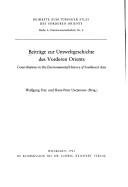
ISBN: 3882260912 Year: 1981 Publisher: Wiesbaden Reichert
Abstract | Keywords | Export | Availability | Bookmark
 Loading...
Loading...Choose an application
- Reference Manager
- EndNote
- RefWorks (Direct export to RefWorks)
Paleoclimatology --- Paleoecology --- Prehistoric peoples --- Middle East --- Antiquities.
Book
ISBN: 2906053945 9782906053946 Year: 2007 Volume: 19 Publisher: Paris De Boccard
Abstract | Keywords | Export | Availability | Bookmark
 Loading...
Loading...Choose an application
- Reference Manager
- EndNote
- RefWorks (Direct export to RefWorks)
Paleoclimatology --- Bronze age --- Paléoclimatologie --- Age du bronze --- Congresses. --- Congrès --- Iraq --- Syria --- Irak --- Syrie --- Antiquities --- Antiquités --- Congresses --- Conferences - Meetings --- Paléoclimatologie --- Congrès --- Antiquités --- Paleoclimatology - Iraq - Congresses --- Bronze age - Iraq - Congresses --- Paleoclimatology - Syria - Congresses --- Bronze age - Syria - Congresses --- Iraq - Antiquities - Congresses --- Syria - Antiquities - Congresses
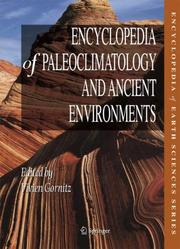
ISBN: 9781402045516 1402045514 1402051972 1784026964 1402044119 9781402044113 9781402051975 Year: 2009 Publisher: Dordrecht : Springer,
Abstract | Keywords | Export | Availability | Bookmark
 Loading...
Loading...Choose an application
- Reference Manager
- EndNote
- RefWorks (Direct export to RefWorks)
Concern exists over human-generated increases in atmospheric greenhouse gases and their potential consequences to society. The Intergovernmental Panel on Climate Change (IPCC) in 2007 finds that global temperatures have increased by 0.8ºC since 1850 and that climate warming is now 'unequivocal'. While the human imprint is becoming increasingly apparent, Earth's climate has shifted dramatically and frequently during the last few million years, alternating between ice ages, when vast glaciers covered Northern Europe and much of North America, and interglacials warm periods much like today. Farther back in geologic time, climates have differed even more from the present. Thus, to fully understand the unusual changes of the 20th century and possible future trends, these must be placed in a longer-term context extending beyond the period of instrumental records. The Encyclopedia of Paleoclimatology and Ancient Environments, a companion volume to the recently-published Encyclopedia of World Climatology, provides the reader with an entry point to the rapidly expanding field of paleoclimatology the study of climates of the past. Highly interdisciplinary in nature, paleoclimatology integrates information from a broad array of disciplines in the geosciences, ranging from stratigraphy, geomorphology, glaciology, paleoecology, paleobotany to geochemistry and geophysics, among others. The encyclopedia offers 230 informative articles written by over 200 well known international experts on numerous subjects, ranging from classical geological evidence to the latest research. The volume is abundantly illustrated with line-drawings, black-white and color photographs. Articles are arranged alphabetically, with extensive bibliographies and cross-references. Volume Editor: Vivien Gornitz is a Senior Research Scientist, Center for Climate Systems Research Columbia University and NASA Goddard Institute for Space Studies. She holds a B.A. from Barnard College and a Ph.D. from Columbia University. Her research interests include global sea level rise--past, present, and future, coastal hazards, climatic implications of land cover transformations, and planetary geology, including Mars. In addition to numerous scientific publications, she has edited Geology of the Planet Mars (Benchmark Papers in Geology, v. 48, Dowden, Hutchinson & Ross, Inc., 1979) and has contributed articles to several of the encyclopedias in the Earth Sciences Series. She was a Contributing Author for the IPCC in 1990, 1995, 2001, and 2007.
Paleoclimatology --- 551.583.2 --- 551.583.7 --- 551.7 --- Geologic climate --- Palaeoclimatology --- Paleoclimate --- Climatic changes --- Climatology --- 551.583.2 Variations of climate in historical periods --- Variations of climate in historical periods --- 551.583.7 Palaeoclimatology --- 551.7 Historical geology. Stratigraphy --- Historical geology. Stratigraphy --- Paleoclimatology - Encyclopedias
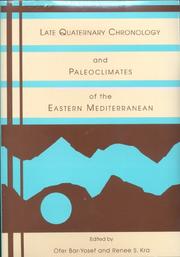
ISBN: 0963831410 Year: 1994 Publisher: Tucson Radiocarbon
Abstract | Keywords | Export | Availability | Bookmark
 Loading...
Loading...Choose an application
- Reference Manager
- EndNote
- RefWorks (Direct export to RefWorks)
Paleolithic period --- Neolithic period --- Paleoclimatology --- Paleoecology --- Radiocarbon dating --- Antiquities, Prehistoric --- Paléolithique --- Néolithique --- Paléoclimatologie --- Paléoécologie --- Datation --- Antiquités préhistoriques --- Méthode du carbone 14 --- Paléolithique --- Néolithique --- Paléoclimatologie --- Paléoécologie --- Antiquités préhistoriques --- Méthode du carbone 14 --- Carbon dating --- Carbon-14 dating --- Dating, Radiocarbon --- Archaeological dating --- Radioactive dating --- Eolithic period --- Old Stone age --- Palaeolithic period --- Stone age --- Quaternary Period --- Climates, Quaternary --- Quaternary climates --- Quaternary climatology --- Quaternary paleoclimatology --- Middle East --- Antiquities.
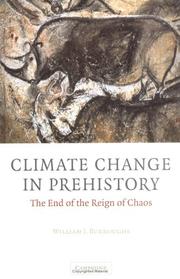
ISBN: 9780521070102 9780521824095 0521824095 9780511535826 0511115458 9780511115455 0511114907 9780511114908 0511113803 9780511113802 0511535821 1280415355 9781280415357 0521070104 1107137209 9780511115458 9786610415359 0511198051 0511181353 0511299095 Year: 2005 Publisher: Cambridge University press
Abstract | Keywords | Export | Availability | Bookmark
 Loading...
Loading...Choose an application
- Reference Manager
- EndNote
- RefWorks (Direct export to RefWorks)
How did humankind deal with the extreme challenges of the last Ice Age? How have the relatively benign post-Ice Age conditions affected the evolution and spread of humanity across the globe? By setting our genetic history in the context of climate change during prehistory, the origin of many features of our modern world are identified and presented in this illuminating book. It reviews the aspects of our physiology and intellectual development that have been influenced by climatic factors, and how features of our lives - diet, language and the domestication of animals - are also the product of the climate in which we evolved. In short: climate change in prehistory has in many ways made us what we are today. Climate Change in Prehistory weaves together studies of the climate with anthropological, archaeological and historical studies, and will fascinate all those interested in the effects of climate on human development and history.
Meteorology. Climatology --- Prehistory --- Climate (Uf) --- Climatic changes --- Paleoclimatology. --- History. --- Social aspects --- Paleoclimatology --- Geologic climate --- Palaeoclimatology --- Paleoclimate --- Climatology --- Changes, Climatic --- Climate change --- Climate changes --- Climate variations --- Climatic change --- Climatic fluctuations --- Climatic variations --- Global climate changes --- Global climatic changes --- Climate change mitigation --- Teleconnections (Climatology) --- History --- Social aspects&delete& --- Environmental aspects --- Climat --- Paléoclimatologie --- Changements --- Histoire --- Aspect social --- Changes in climate --- Climate change science --- Climate and civilization --- Human beings --- Human geography --- Migrations of nations --- Civilization and climate --- Civilization --- Migrations. --- Global environmental change --- Environmental Sciences --- Atmospheric Science --- Climatic changes - History --- Climatic changes - Social aspects - History
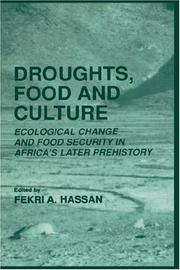
ISBN: 1280200340 9786610200344 0306475472 0306467550 9780306467554 9780306475474 Year: 2002 Publisher: New York : Kluwer Academic/Plenum Publishers,
Abstract | Keywords | Export | Availability | Bookmark
 Loading...
Loading...Choose an application
- Reference Manager
- EndNote
- RefWorks (Direct export to RefWorks)
Recent droughts in Africa and elsewhere in the world, from China to Peru, have serious implications for food security and grave consequences for local and international politics. The issues do not just concern the plight of African peoples, but also our global ecological future. Global climatic changes become manifest initially in regions that are marginal or unstable. Africa's Sahel zone is one of the most sensitive climatic regions in the world and the events that have gripped that region beginning in the 1970's were the first indicator of a significant shift in global climatic conditions. This work aims to bring archaeology with the domain on contemporary human affairs and to forge a new methodology for coping with environmental problems from an archaeological perspective. Using the later prehistory of Africa as a comparison, the utility of this methodological strategy in interpreting culture change and assessing long-term response to current, global climatic fluctuations is examined and understood.
Africa -- Antiquities. --- Agriculture, Prehistoric -- Africa. --- Climatic changes -- Africa. --- Paleoclimatology -- Africa. --- Prehistoric peoples -- Food -- Africa. --- Prehistoric peoples --- Agriculture, Prehistoric --- Climatic changes --- Paleoclimatology --- Anthropology --- History & Archaeology --- Social Sciences --- Prehistoric Anthropology --- Archaeology --- Food --- Africa --- Antiquities. --- Social sciences. --- Culture --- History. --- Environmental management. --- Anthropology. --- Archaeology. --- Social Sciences. --- History, general. --- Regional and Cultural Studies. --- Environmental Management. --- Study and teaching. --- Geologic climate --- Palaeoclimatology --- Paleoclimate --- Climatology --- Changes, Climatic --- Climate change --- Climate changes --- Climate variations --- Climatic change --- Climatic fluctuations --- Climatic variations --- Global climate changes --- Global climatic changes --- Climate change mitigation --- Teleconnections (Climatology) --- Prehistoric agriculture --- Cavemen (Prehistoric peoples) --- Early man --- Man, Prehistoric --- Prehistoric archaeology --- Prehistoric human beings --- Prehistoric humans --- Prehistory --- Human beings --- Antiquities, Prehistoric --- Environmental aspects --- Agriculture --- Changes in climate --- Climate change science --- Culture-Study and teaching. --- Culture—Study and teaching. --- Environmental stewardship --- Stewardship, Environmental --- Environmental sciences --- Management --- Annals --- Auxiliary sciences of history --- Archeology --- History --- Antiquities --- Primitive societies --- Global environmental change
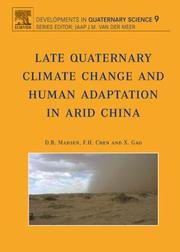
ISBN: 9780444529626 0444529624 9786611025441 1281025445 0080544312 9780080544311 Year: 2007 Publisher: Amsterdam ; London : Elsevier,
Abstract | Keywords | Export | Availability | Bookmark
 Loading...
Loading...Choose an application
- Reference Manager
- EndNote
- RefWorks (Direct export to RefWorks)
Due to political pressures, prior to the 1990s little was known about the nature of human foraging adaptations in the deserts, grasslands, and mountains of north western China during the last glacial period. Even less was known about the transition to agriculture that followed. Now open to foreign visitation, there is now an increasing understanding of the foraging strategies which led both to the development of millet agriculture and to the utilization of the extreme environments of the Tibetan Plateau. This text explores the transition from the foraging societies of the Late Paleolithic to t
Paleoclimatology --- Climatic changes --- Arid regions climate --- Human ecology --- Excavations (Archaeology) --- Paleolithic period --- Neolithic period --- Paléoclimatologie --- Climat --- Climats arides --- Ecologie humaine --- Fouilles (Archéologie) --- Paléolithique --- Néolithique --- History --- Changements --- Histoire --- China --- Chine --- Antiquities. --- Antiquités --- S17/0200 --- S19/0500 --- S19/0600 --- China: Art and archaeology--Archaeology and prehistory: general and Asia (incl. human palaeontology) --- China: Natural sciences--Geology (incl. geological aspects of earthquakes) --- China: Natural sciences--Paleontology (animal) --- Paléoclimatologie --- Fouilles (Archéologie) --- Paléolithique --- Néolithique --- Antiquités --- Geologic climate --- Palaeoclimatology --- Paleoclimate --- Climatology --- Climates, Quaternary --- Quaternary climates --- Quaternary climatology --- Quaternary paleoclimatology --- Quaternary Period --- Ecology --- Environment, Human --- Human beings --- Human environment --- Ecological engineering --- Human geography --- Nature --- Changes, Climatic --- Changes in climate --- Climate change --- Climate change science --- Climate changes --- Climate variations --- Climatic change --- Climatic fluctuations --- Climatic variations --- Global climate changes --- Global climatic changes --- Climate change mitigation --- Teleconnections (Climatology) --- Climate, Arid regions --- Climate, Dryland --- Dry climate --- Dryland climate --- Social aspects --- Effect of environment on --- Effect of human beings on --- Environmental aspects --- History. --- Agriculture --- Farming --- Husbandry --- Industrial arts --- Life sciences --- Food supply --- Land use, Rural --- Origin. --- Global environmental change
| Listing 1 - 7 of 7 |
Sort by
|

 Search
Search Feedback
Feedback About
About Help
Help News
News